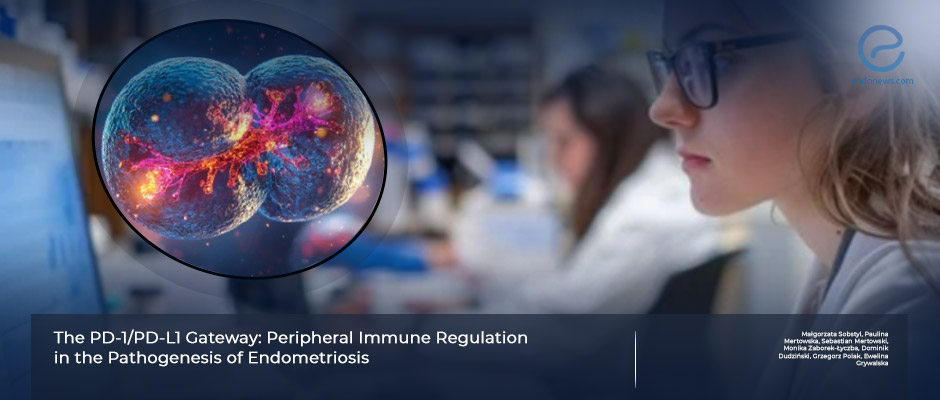Unviling the role of PD-1-PD-L1 Pathway in Endometriosis Progression and Therapy
Sep 25, 2024
The PD-1-PD-L1 Axis and Endometriosis
Key Points
Highlight
- The PD-1/PD-L1 axis may have an impact in the immune dysregulation observed in endometriosis, and targeting this pathway could offer promising therapeutic potential.
Importance
- Exploring the PD-1/PD-L1 pathway in endometriosis enhances our understanding of its underlying immunological mechanisms.
- This also may lead to innovative immunotherapeutic approaches that could change treatment strategies.
What’s done here?
- This preliminary studyexamined the role of the PD-1/PD-L1 axis in peripheral blood and peritoneal fluid of 80 patients with endometriosis.
- PD-1 and PD-L1 expression on T and B lymphocytes in peripheral blood were explored and compared to those of 20 healthy women.
- The soluble forms of PD-1 and PD-L1 in both serum and peritoneal fluid was also measured.
Key results
- The expression of PD-1/PD-L1 changed with disease progression, with varying levels observed across different stages of endometriosis.
- Increased PD-L1 expression on ectopic endometrial tissue was linked to immune evasion, inhibiting the cytotoxic response of T cells and promoting disease persistence.
- These results suggest that immune system dysregulation, particularly involving the PD-1/PD-L1 axis, may have a role in the pathogenesis and progression of endometriosis.
Strength and Limitations:
- The small number of recruited patients and the one-time measurement of immunological parameters may restrict the ability to track changes over time.
Lay Summary
The role of immune system in Endometriosis, a chronic inflammatory disease is complex, involving both protective and harmful effects. A key player in this process is PD-1 (programmed cell death protein 1), a protein found on T cells that regulates immune responses by inhibiting T and B lymphocyte activity when it binds to its ligand, PD-L1. Increased levels of PD-1 and PD-L1 can lead to immune evasion, reducing the effectiveness of the immune system in eliminating ectopic tissue. However, the exact mechanisms behind this suppression are not fully understood.
A preliminary studyby Mertowska et al., published in the International Journal of Molecular Science, aims to explore the impact of the PD-1/PD-L1 axis on T and B lymphocytes in patients with endometriosis, seeking to clarify mechanisms of immunosuppression and identify potential new therapeutic targets.
The expression of PD-1 and PD-L1 on T and B lymphocytes in the peripheral blood of 80 newly diagnosed, untreated endometriosis patients, grouped by disease stages I–IV were examined and the results are compared to those of healthy volunteers without reproductive disorders. Comprehensive tests analyzed blood morphology, biochemistry, and immunophenotyping to assess T and B lymphocyte percentages and activation levels. Findings were analyzed collectively for all endometriosis patients, and also by individual disease stages.
Patients with endometriosis exhibited significantly elevated PD-1 and PD-L1 expression on T cells, immune cells, and endometrial tissues, which correlated with disease progression. As the disease advanced, these increased levels facilitated immune evasion by diminishing T cell cytotoxicity and promoting immune tolerance, allowing ectopic endometrial tissues to persist and proliferate. This highlights the PD-1/PD-L1 axis as a potential key factor in the immune system's inability to eliminate ectopic tissues in endometriosis.
Despite ongoing research, there are currently no definitive medical cure for endometriosis, treatment options primarily relyvon symptom management through immune modulators and other medical agents except hormone treatmens for symptoms. Identifying these pathways may contribute to immune evasion and disease progression, to open up potential avenues for novel immunotherapeutic strategies.
Research Source: https://pubmed.ncbi.nlm.nih.gov/38928479/
PD-1 PD-L1 endometriosis immune system lymphocyte T cells progression stage

